The Dublin West electoral constituency stretches from and includes the Phoenix Park and runs to the Liffey at the south and to the border of Meath on the west and north west.
It's the Taoiseach's constituency. In fact, Leo Varadkar topped the polls there at the last election. Varadkar's fellow TDs in the region are Fianna Fáil's Jack Chambers, Labour's Joan Burton and Ruth Coppinger of Solidarity-People Before Profit. Tánaiste Frances Fitzgerald also lives in Castleknock.
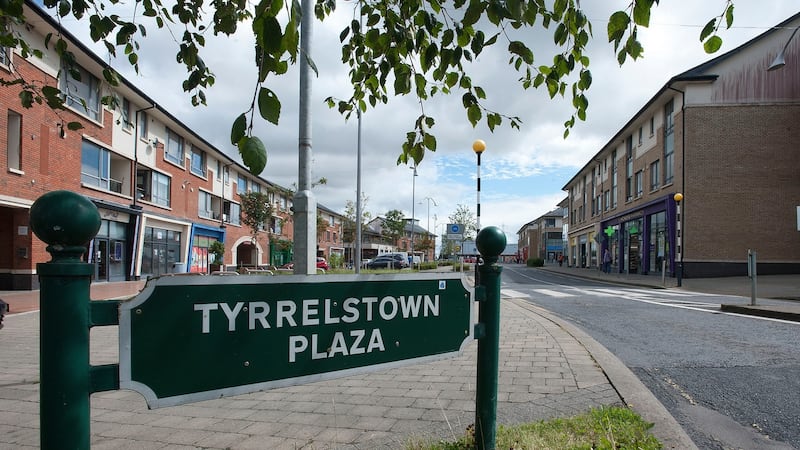
There are some significant disparities from area to area within Dublin West. According to the Centre for Health Geoinformatics at NUI Maynooth, the cancer death rates are almost three times as high in Blakestown North-West in Mulhuddart as they are in Castleknock South-East.
This is a point noted frequently by more left-wing councillors in the area. "You can draw a line from the Blanchardstown centre straight down the Ongar road down to Ongar and anything over the right hand side you're three times more likely to die of cancer there than you are in Castleknock," says Sinn Féin's Paul Donnelly.
Castleknock is traditionally seen as a middle-class and relatively well-to-do area, the home of the prestigious Castleknock College and estates such as the Georgian Village.
According to the CSO, the two Castleknock electoral districts had 7.1 per cent and 5.8 per cent unemployment rates in 2016.
There doesn’t seem to be as much political activism here as in other parts of Dublin 15. “People around here are not reactive – unless it’s about property tax,” says Fianna Fáil councillor Howard Mahony. “But people were out with placards on the streets protesting [over the proposal to build a Lidl supermarket in the centre of the village].”
In contrast, across the canal from Castleknock lie the traditionally more economically diverse communities of Mulhuddart and Corduff, with unemployment rates of 20 and 22 per cent respectively. Historically these areas have struggled with disadvantage and addiction.
Tyrrelstown, which is probably the youngest and most ethnically diverse area in the State (40 per cent of people living here were born outside of Ireland, according to the CSO), is in the civic parish of Mulhuddart and the bulk of the community live on developments commenced in 2001.
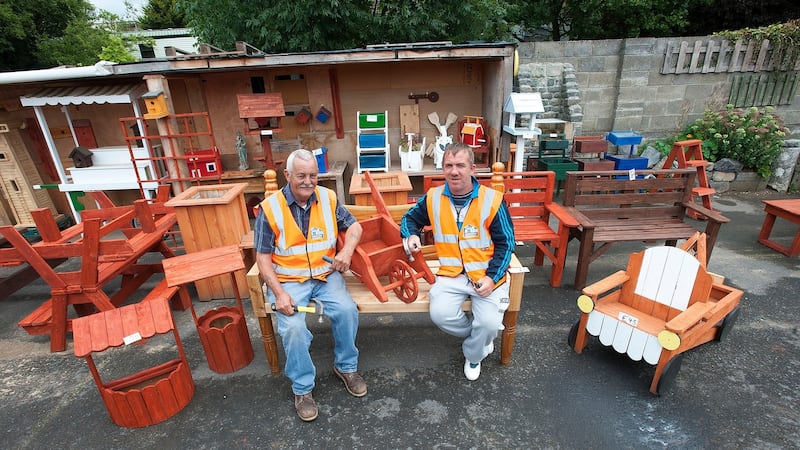
There is a 28 per cent unemployment rate here, putting it on a list of 79 blackspots the CSO created after the 2016 census. However, in many ways it is economically mixed, with many people working in nearby multinationals. For several years this new development suffered due to underinvestment and bad planning, though good schools, local projects and transport links have come on line in recent years following the advocacy of local community groups.
To take the temperature of suburban Ireland in all its variety, The Irish Times has talked to people who live in these disparate parts of Dublin West, about the issues they face, the lives they lead and how where you live affects how you live.
These are complex questions. Relative disadvantage is real, but communities are diverse and resist stereotyping (one Corduff woman lamented always hearing her home linked to crime, poverty and drugs in the media).
All these areas have vibrant communities and hardworking volunteers working for their neighbours. Here are the thoughts of people we met in residents’ associations, a tennis club, a GAA club, a Men’s Shed group, community centres and a cricket club.
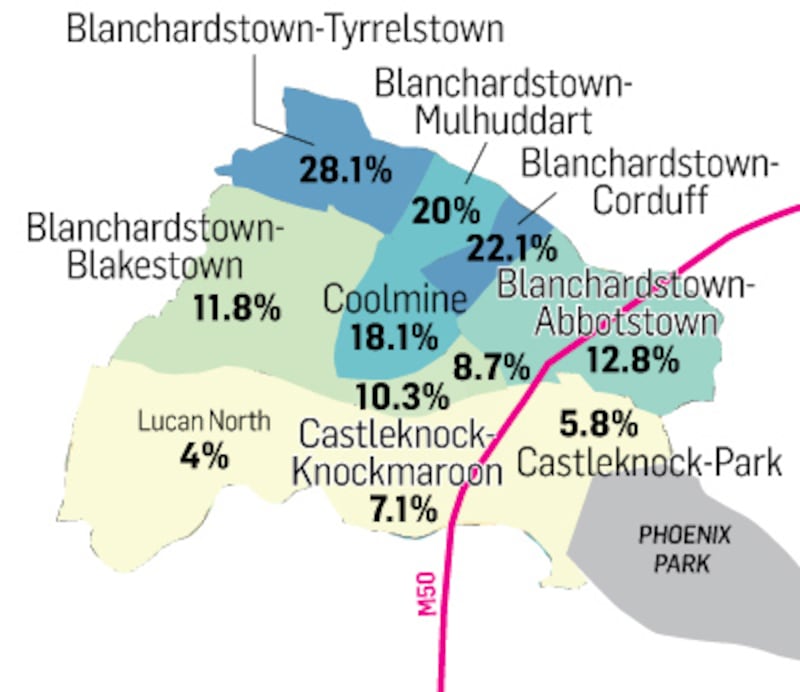
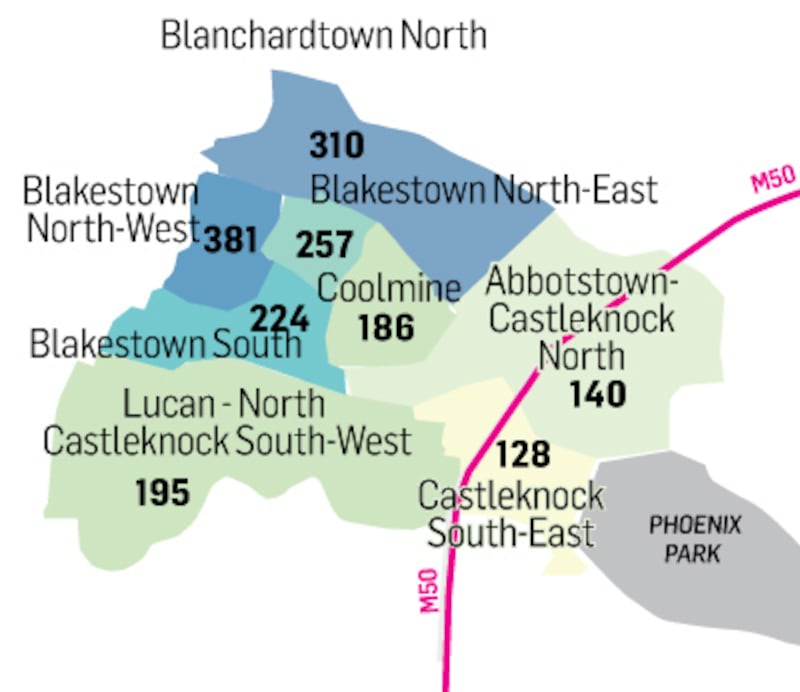
LOCAL PERCEPTIONS
Mulhuddart-Corduff
“[Outsiders think Mulhuddart] is a no-go area but it’s not,” says John Hennessy, a former security man who has lived for 32 years in Corduff and frequents the Mulhuddart Men’s Shed, a workshop and social outlet for local men. “It’s a brilliant area. The people are fantastic.”
“I work with youth on the river. We do the fishing and all the competitions. We have a lake down in Waterville [Park]. [A friend] introduced a duck into the lake there before Christmas – it was a pet duck. Everyone comes down to that lake to specifically feed that one duck and her five chicks. The community is great here. Don’t be listening to other people.”
“I hate when we invite people from other areas to the centre and they say ‘Is it safe to come up? Is it okay to park our cars?’” says Adrienne O’Shea, supervisor at the Corduff Community and Resource Centre. “The hackles on the back of my neck rise up.”
“Some people put Castleknock in their address,” says Lillian Parker. “It’s all media-related. They say ‘deprived area, social welfare, lone parents, crime, drugs’ but they can’t see the community.”
Castleknock
Outsiders think people living in Castleknock are wealthy, says Michael Byrne (67). “Part of that is from the fact there used to be only fee-paying schools here.”
“There’s immediately an assumption of snobbery. The area is perceived as being wealthy and privileged,” says Bernadette Hearns. “People elevate you in their heads if you say you’re from Castleknock.
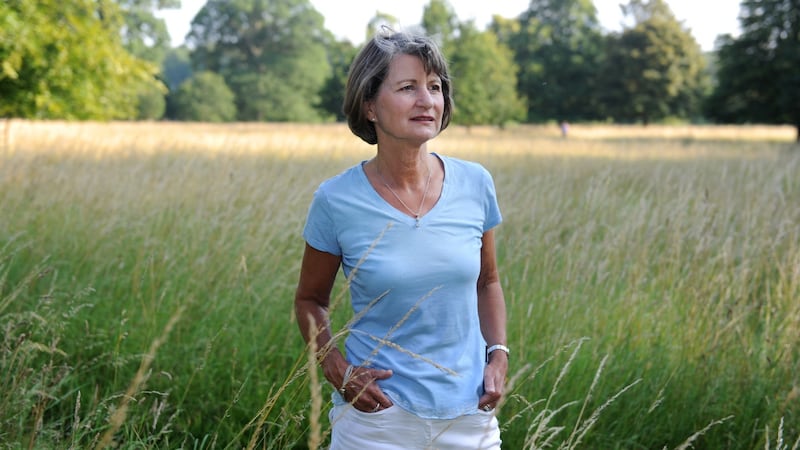
“It’s the same when you’re looking for funding for services, whether its clubs for schools or whatever; the perception is that we are all well-heeled and we can pay for everything ourselves. We’ve have to fight for everything.”
“A lot of places, like Castleknock, get reputations that then get way outdated,” says Bernard O’Keeffe (51). “The reality here is that the majority of people live in semi-detached houses and are ordinary people.”
“There are some very wealthy people living here,” says Liza Riley, “but most people are normal; schoolteachers, civil servants, the squeezed middle, those kinds of people.”
“Property is expensive here, and that always dictates an awful lot,” says says Fianna Fáil councillor Howard Mahony, who lives in Castleknock in the Dublin West constituency. “It doesn’t mean that people who live here are well-off; it just means that they bought at the right time.”
“I wouldn’t be aware that people think we’re privileged,” says Teresa Kirk, who has lived in the area for 44 years. “Do people really say that?”
Tyrrelstown
“There’s a misconception that Tyrrelstown is a dangerous area,” says Natasha Estre, a stay-at-home mother originally from South Africa. “Twice in Castleknock people have asked me, ‘Is it safe there?’”
“A guy who worked with my husband said ‘You live in Tyrrelstown, that’s a ghetto right’?” says Lisa Crehan, who established the Tyrrelstown Women’s Group and a local branch of Fáilte Isteach.
“Tyrrelstown is a very new area and a very different population to the old established parts of Dublin 15,” says Claire Clifford, who runs a facepainting business and helps out with the Cricket Club.
“They wouldn’t have the same level of diversity as we have here. I love living in Tyrrelstown. From the outside looking in, Tyrrelstown might look peculiar because it’s not what people are used to in this country but I think it’s a great place to live.”
BORDERS
Tyrrelstown and Castleknock
“I came [to Tyrrelstown] in 2002,” says Greg Lee who works in St James’s Hospital and is involved in Tyrrelstown GAA. “A friend asked me to come to her house for a party and the taxi driver dropped me down and there was nothing – half a dozen houses, just mud and boards. A year later I was looking to buy with my girlfriend. We could afford here . . . Someone asked me recently how I made it in and out. They think it’s in Meath.”
“The border with Meath is in the field over there,” says Lisa Crehan.
Nobody who lives in Castleknock seems to agree on where it is located; where the boundaries begin and end.
“For me, the village always stopped at the humpbacked bridge, where the train station is. With the racecourse at the other end,” says Liza Riley (47).
“It goes from the village to the gates of the Phoenix Park, and up to Castleknock College,” says Kieran Kelly (57).
“The auctioneers call the M50 the divide between Castleknock and other parts of Dublin 15,” says Fitzgerald.
“Where Castleknock begins and ends is a moot point. The developers kept extending it,” says Rogers.
“Every estate for miles around has ‘Castleknock’ in its name,” says Eithne Loftus.
HOUSING
Mulhuddart and Tyrrelstown
“We need more social housing in the area,” says Adrienne O’Shea who rents her house from the council. “When people born and reared in the area who want to remain in the area are told they have to go where the housing is, you’re fragmenting the community.”
“There’s nothing available to rent and people struggle to find rental properties in the area,” says Claire Clifford. “There’s a very high rental demand in Tyrrelstown due to the big companies. There’s some concern among some residents that anti-social tenants are being moved in to the area but they’re working with Fingal County Council on those issues.”
“My wife and I moved into a four-bedroom house with a friend,” says Suresh Kumar Madhikanti, a fleet manager at a car rental company. “Our child is in India with my parents. He’s one today . . .We’re bringing him here in November. . . but we need to find a suitable house. Rent is insane. Every house you go to, at least 20 or 30 people are queuing up.”
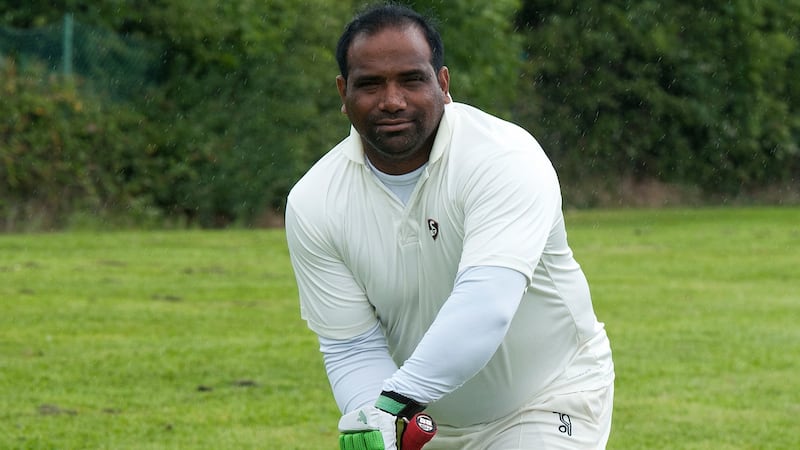
“There isn’t a huge interest in community or ownership in Tyrrelstown because it is a big rental market,” says Natasha Estre. “People think they’ll be moving on.”
“The high rents are a big issue,” says Bernie Cawley who volunteers with Vincent de Paul. “We visit a lot people who don’t have money to pay the electricity and gas.”
“Sixty-five per cent of Tyrrelstown is rented and because of that there’s the risk of homelessness” Rob Webb.
“[Dublin 15] has the highest homeless figures,” says independent councillor Lorna Nolan. “It’s a blackspot for homelessness.”
Those people tend to end up in the city, she says. “The only homeless accommodation here is extremely limited,” says Sinn Féin councillor Paul Donnelly. “There are no homeless units. There are no hubs.”
Castleknock
Several people say that Castleknock – certainly “old Castleknock” – has never had any purpose-built social housing, or that if had “it isn’t conspicuous”, says Marie McGee.
“There are a lot of anti-social issues in other parts of Dublin 15, and a lot of people renting there,” says one resident. “Maybe lack of home ownership has something to do with anti-social behaviour.”
“Builders and developers paid to get out of the social housing clause, and paid for those houses to be built in other parts of Dublin 15,” says John Henry (53). “I don’t know how they were allowed to do that, but they were.”
“What I worry about are the elderly people who have nowhere to go from their big houses, now that their children are gone,” says councillor Eithne Loftus. “They have nowhere to downsize to in the village.”
“We live in our house on our own now, and when we die, our children will have so much tax to pay on our house, they won’t be able to buy each other out, so probably none of them will be able to live here,” says Mary Hughes (60).
“There is no housing stock for first-time buyers here,” says Barbara O’Neill.
“Castleknock was not well-planned,” says Sarah Jane Piscotti. “It’s low-density, with lots of football pitches. Those green spaces look good, but they’re not very useful. There should be apartment blocks and more housing here. There is no turnover of generations. Unless you are inheriting money, you will not be able to live here in the future.”
LOCAL CONCERNS
Castleknock
“People tend not to complain much in Castleknock. For them to kick up the way they did was a big thing, because people around here are not reactive – unless it’s about property tax. But people were out with placards on the streets, protesting,” says Fianna Fáil councillor Howard Mahony, who lives in Castleknock in the Dublin West constituency.
Mahony is talking about a proposed development in the middle of Castleknock village, where the proposed anchor tenant is a Lidl supermarket. An Bord Pleanála has granted permission for the €15 million development
The “supermarket planning issue” appears to unite the community in Castelknock. “Nobody wanted that supermarket, and they are going to destroy the village,” says Miriam Rogers (59). “You cannot get through the village as it is. It will be a traffic disaster.”
“The last little shred of a sense of a village will be gone,” says Bernadette Hearns. “If Leo Varadkar could influence the outcome for us, so that it wasn’t built, he’d be our friend forever.”
Other than this, however, there are few local concerns. “I don’t think there are any disadvantages to living in Castleknock at all,” says Eithne Loftus. “It’s a heritage village, and a most attractive place to live.”
“I know this sounds like a first-world problem, but there isn’t a great choice of restaurants and bars here. They’ve been the same for 20 years. I’d like to see some new restaurants,” says Bernard O’Keeffe.
“We don’t have a Luas, and we don’t have a Dart either,” says Deirdre Naughton.
“The traffic is ferocious,” says Miriam Rogers.
“There is no affordable housing for first-time buyers,” says Sarah Jane Piscotti.
Mulhuddart-Corduff
“I’d like to see a lot more facilities for kids,” says John Hennessy. “What we do isn’t enough. If kids want to go to a disco they have to go to Wrights out in Swords.”
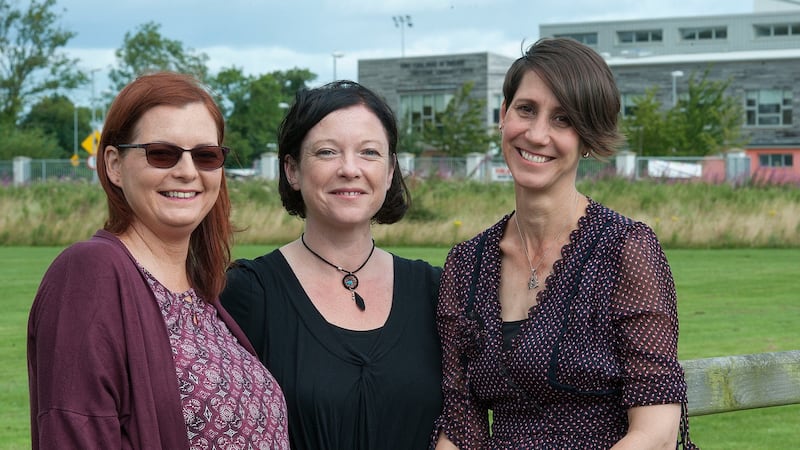
“They’re bored and they start hanging around the street,” says Fran Shaw.
“In fairness,” says Hennessy, “A lot of them are good kids. I saw the group my son hangs with carrying an old lady’s shopping for her.”
“When they built the Aquatic Centre with public money we were under the impression that the kids . . . would have somewhere to go,” says Lillian Parker. “I live directly across the road and to bring two to three children costs about €100. You can’t afford that! This big fancy building and a swimming pool and they still have to go swim in the canal.”
Tyrrelstown
“Anti-social behaviour is an issue in Tyrrelstown,” says Kumar Rudraraju. “They destroy things in public parks. My daughter went to the new park nine months ago and three kids started throwing stones. But our community is trying to resolve these issues and make a good community – that’s what I like about it.”
“There’s a group of teenagers coming through and the lack of facilities for them is a problem,” says Claire Clifford.
“It’s a tiny minority,” says Natasha Estre, “but it affects other kids who don’t want to go to the shops because there are kids hanging around making them feel uncomfortable.”
“It’s calmed down recently but that took a considerable amount of effort,” says Noel Quigley. “Two protests at the Garda station and Fingal County Council by the Tyrrelstown Action Group. They did, in fairness, deploy a lot more resources after that.”
ADDICTION AND ISOLATION
Mulhuddart-Corduff
Drug addiction is a legacy issue in Mulhuddart and Corduff although apparently less of an overt problem in newly built Tyrrelstown. The sudden closure of a long-serving drug service called Adapt resulted in a recent protest in Mulhuddart village.
“This is a growing community with a very young population,” says local TD Ruth Coppinger. “The idea that we don’t need a drug service which has been in existence for around 18 years is mad.”
“I’d love the people on drugs to get more help,” says Fran Shaw. “I’d like to see [Adapt] return. I take the kids fishing down in the park and there are needles left around. It’s a disgrace.”
“I lost one of my children to drugs but sure everyone has a story like that,” says Olive Farrell who I met at the protest. “His children have babies now. He was done out of being an old granda. Now at least I can say, ‘Thank God I know where you are. There’s no one there to hurt you now.’”
Mental health is also an issue for the community, says Haans Meyer who works with the Mulhuddart Men’s Shed. “I think depression is a big thing . . . People who are very badly depressed will come down here and we’re not professionals but we listen.”
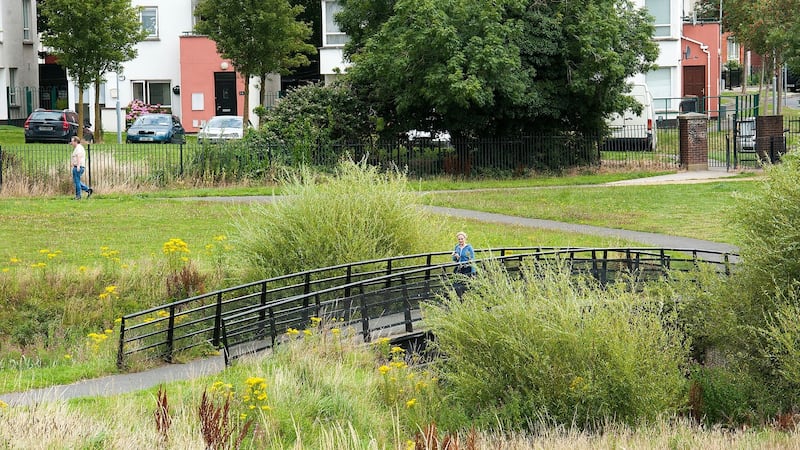
“[Lorna and I] are part of Suicide Awareness D15,” says Lillian Parker. “We have a counsellor who will see you in a crisis situation . . . We pay for it with donations from the community. When we set this up my son had just died by suicide and there was nowhere to go and nowhere to get help . . . At that time suicides were going in clusters. Mulhuddart. Finglas. Even Castleknock. Suicide doesn’t know address codes.”
“In Tyrrelstown there’s an issue with isolation,” says Lisa Crehan. “And that sounds crazy because we’re in one of the biggest residential areas in the history of the state [2,300 housing units]. But for stay-at-home mums it can be very difficult to connect. For the first nine years here I knew nobody.”
“I have three older kids and seven months ago a little baby,” says Natasha Estre who is originally from South Africa. “It’s very isolating. For interaction and support you have to go Blanchardstown or Castleknock which have resources and established community groups.”
“There are no pubs or cafes,” says Crehan. “We tried to start a community coffee shop but we couldn’t get a venue . . . And we don’t have a health clinic here. I’ve had women landed here from Sudan and they don’t know anything about Ireland and they’re lost. Sorry. I’m getting emotional because some people are very vulnerable.”
RECESSION’S DAMAGE
Tyrrelstown
“[The recession] did affect me,” says Santosh Pallae, an IT worker living in Tyrrelstown. “In 2010 we had to change jobs . . . It was okay but it did affect everybody. The stress alone! I’ve seen many people suffer a lot. Many had to move home to India.”
“There are a lot of tech companies and pharma companies around the area,” says Claire Clifford. “Obviously a lot of people are struggling but I think generally people in Tyrrelstown who want to be employed are employed.”
“I’m in negative equity but I’m okay,” says Kumar Rudraraju. “I kept my job. I work in IBM, closeby. I’ve a six-minute commute so no complaints.”
I ask some of the Tyrrelstown residents if they owned their own homes. Most bought in the early noughties. “The banks own our homes,” says Lisa Crehen and they all laugh.
Castleknock
“In Castleknock, I barely noticed any effects of the recession, but when we went to visit relatives in Galway, I saw how lots of shops had closed and there was less hustle and bustle there,” says Colm Neville (23). “I did notice that we got some new boys at our school. They had been at fee-paying schools.”
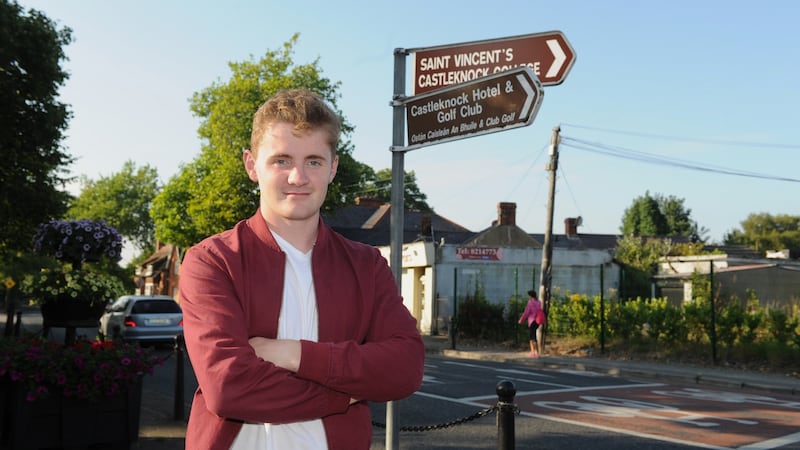
The tennis club currently has some 900 families as members, and the fees have not increased in a decade. “Family membership at the tennis club is €750 a year, and some of my friends found it too expensive,” says Ann-Marie Baxter (51). “Membership isn’t the only cost: most people pay for coaching too.”
“I went back to work full time. I used to job share,” says Mary Connellan (51).
“I used to eat out a lot more than I do now,” one woman says. “When I’d go out, we’d have cocktails first, then dinner and a bottle of wine. Now we just have dinner and a bottle of wine. We don’t have the cocktails any more. We’ve cut back.”
“Our GAA club Lotto really suffered,” says Barbara O’Neill. “We did it through the pubs, and people weren’t in the pubs, so the money wasn’t there.”
“The airwaves were full of stories of recession ad nauseam, but I couldn’t see any of it happening around me,” says Teresa Kirk. “The recession wasn’t relevant to me. It was my husband who had to work all the hours God sent to keep things going.”
“You’d notice the restaurants in the village were less busy, and there weren’t as many people around,” says Marie McGee. “People didn’t want to be seen with a new car, even if they could afford it. That probably wasn’t good for the recession either: not buying new cars.”
“I was made redundant and my husband had a paycut,” says Liza Riley. “We lost about 30 per cent of our income. We only have one car now, and we do our shopping in Aldi instead of Supervalu. We switched all our utility bills to the cheapest we could get. My husband is English and before we used to go and visit his family three times a year. That’s knocked on the head now. We are definitely part of the squeezed middle.”
Mulhuddart-Corduff
“Some of the perceptions of poverty and unemployment in Mulhuddart are valid,” says Lorna Nolan. “But there’s a good community . . . The people in this community are salt of the earth, they really are.”
The recession affected parts of Dublin 15 more than others, says Sinn Féin councillor Paul Donnelly. “You can draw a line from the Blanchardstown centre straight down the Ongar road down to Ongar and anything over the right hand side you’re three times more likely to die of cancer there than you are in Castleknock and you’re two times more likely to have any other illness . . . It’s a straight line.”
“I was a manager of one of the restaurants in the airport,” says Haans Meyer. “I was made redundant in 2011. I was unemployed for one year, then I got involved with the Men’s Shed and for the last three years I’ve been on a CE scheme.”
COMMUNITY SPIRIT
Castleknock
“There is a brilliant community spirit,” says Liza Riley. “And with the Blanchardstown shopping centre, it’s like having the city centre on your doorstep, but covered. There are very few anti-social problems. I would say the worst we’d ever have is kids acting the maggot, raiding their parents’ drinks cabinets, like we all did ourselves. Maybe having a few cans of beer in a field.”
“It’s safe,” says Barbara O’Neill. “I wouldn’t feel my daughters shouldn’t be walking home alone at night from the bus. But we want better transport. Whenever they do the Luas or anything, they leave us out of it.”
“It’s great to be so close to the airport,” says Teresa Kirk.
“The Phoenix Park is on our doorstep,” says Marie McGee.
Mulhuddart-Corduff
“If anyone is ill or there’s a death or anyone’s in need you’ll really see people rallying around,” says Adrienne O’Shea. “We had a Fun Day here on Saturday – face-painting, bouncy castles, food . . . people come out of the woodwork for anything to do with the kids.”
“I do a bit of Elvis [at some of the events],” says Charlie Maples.
“The old people love him doing Elvis,” says O’Shea. “They love the suit.”
“The village [in Mulhuddart] was done up with the community and a business man together,” says Haans Meyer, “four or five years ago people would dump litter on the ground. Now you see the same people put it in the litter box. They have taken ownership of it.”
“Years ago this place was mad,” says Fran Shaw. “You couldn’t walk down the road. You might get attacked. It’s much calmer now. It’s changed. The likes of the Men’s Shed, football teams getting the kids of the street, a big community effort. I’m after taking on an under-10 football team two evenings a week. It’s great to get out and work with the kids . . . and they’re all from different countries.”
Tyrrelstown
“When I came here from the city centre to Tyrrelstown I saw a lot of mixed nationalities here and I felt comfortable with that,” says Suresh Kumar Madhikanti. “Everyone was equal. I get a comfortable feeling here.”
“It’s very diverse but I wouldn’t say that those diverse groups really come together as much as they could,” says Natasha Estre.
“The new schools are very good,” says Santosh Pallae. “People are saying these are going to be the best schools. That’s what you want. My oldest is 16 and he wants to do medicine. More still needs to be done . There should be more intercultural activities.”
“I think integration in the schools is a major positive,” says Lisa Crehen. “I had no international friends when I was growing up. My son understands the world so much better.”
“We started the cricket club five years ago,” says Kumar Rudraraju. “The park is long overdue – a 32-acre park – it’s going to be beautiful when it’s finally done. They’ve seeded our cricket ground . . . Until then we use the grounds here [in Castleknock College].”
“The Tyrrelstown Residents’ Association spent a lot of time fighting to get that stuff into the area,” says Claire Clifford. “When we came here in 2002 there were no roads. There were no shops. The park only opened a couple of years ago. When the village centre opened that was a new lease of life.”
“It would be harmful if an article promoted that the grass is greener elsewhere,” says Greg Lee of Tyrrelstown GAA. “I’d like to see a focus on the positive things being done. One of the issues is leakage – people going out to big established clubs. People have to fight to keep things here.”
“In a lot of ways we have it all now,” says Noel Quigley. “We’re getting there with schools, the community centre, the youth groups. Public transport isn’t bad. It’s quite a nice place to live.”
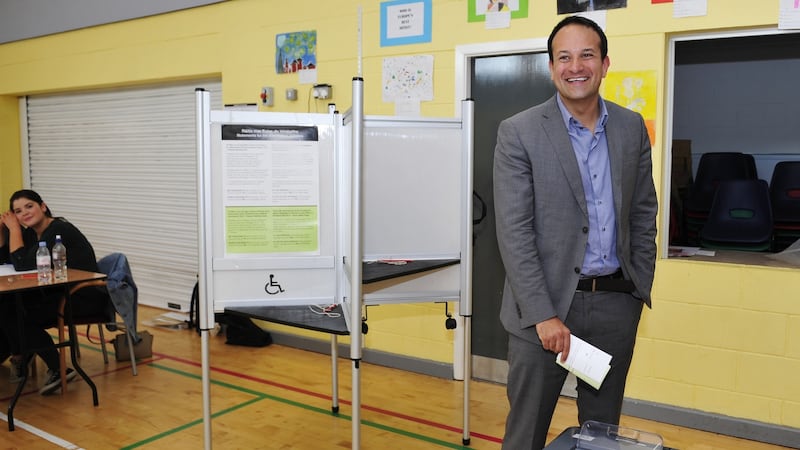
Leo Varadkar and Castleknock
“It’s nothing new for us to have a very prominent politician in the area,” says Willie Fitzgerald. “Frances Fitzgerald has lived here for years. Then there were the Lenihans.”
“What is his vision for the country?” says Clare Byrne. “We have no idea.”
“I am fully behind Leo, and his philosophy about getting up in the morning,” says Miriam Rogers. “He is going to do things for people who are working, and contributing to the economy.”
“I think Leo comes from an area of Castleknock where he doesn’t want to be seen doing things for his constituency and then accused of favouritism. He’s not just the opposite of the Healy-Raes; he’s the opposite of every politician in that way,” says Liza Riley.
“Our generation are less obsessed with the image of him than our parents’ generation,” says Sarah Jane Piscotti. “What we want is good politics, and we want answers to the housing crisis. I don’t care about people’s private lives. But I couldn’t tell you what he stands for, and a good leader should present a vision, and stick to it.”
“Leo doesn’t get up as early as me in the morning,” says Piscotti, the mother of a four-month old boy, “ and he definitely doesn’t get up as many times as me in the night.”
Leo Varadkar and Mulhuddart
“Leo Varadkar, who’s he?” says John Hennessy. “I had dealings with him when I was fighting with the Fingal County Council for the lake in Waterville Park. I run a fishing club on Wednesdays for the kid . . . He said, ‘Why do you need the lake?’”
“I don’t dislike Leo,” says Lorna Nolan. “But I think if every person in this area who could vote went out to vote they’d vote left wing. I don’t see him or any of his councillors down in projects I’m involved in.”
“Leo wouldn’t know where we were unless he had a Satnav and Google Earth,” says Lillian Parker.
“If we were on the other side of the canal in Castleknock he’d know us,” says Charlie Maples who works in Corduff for community maintenance.
Leo Varadkar and Tyrrelstown
“Jokingly one year I sent all the TDs a map to see if they knew where Tyrrelstown was,” says Rob Webb. “In fairness, Leo is probably here more than the rest.”
“You get more interaction from the councillors,” says Noel Quigley. “The fact the polling is so low and that there are large number of non-Irish citizens who can’t vote in the national elections and a high rental market, means TDs don’t have that much interest. There’s a quote widely attributed to Brian Lenihan about how there was no point canvassing in Tyrrelstown because only one in five people had the vote . . . Leo did meet with a group from the residents’ association in the Dáil.”
“Personally I think it’s fantastic to have a young vibrant person heading up the country,” says Claire Clifford. “I think he’s a breath of fresh air.”
“I’m not that much into politics but it’s nice to be able to say to Irish friends: ‘the Taoiseach is Indian’, ” says Suresh Kumar Madhikanti.










